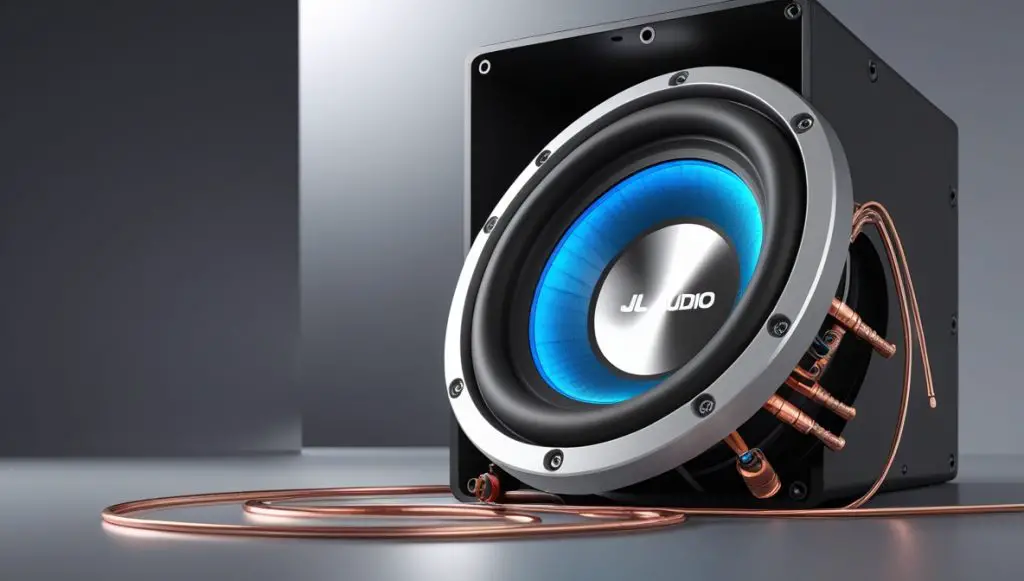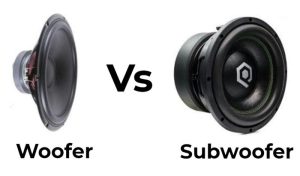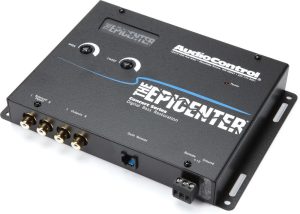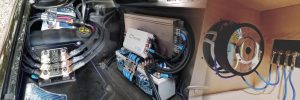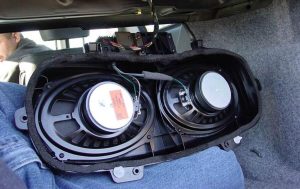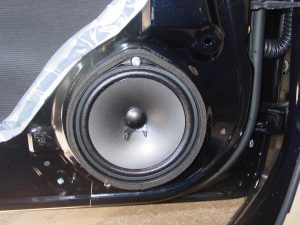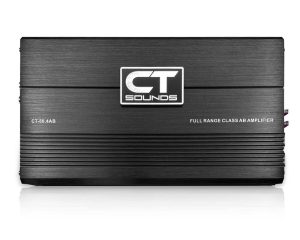Choosing a subwoofer can be a daunting task, especially when you start delving into the technical specifications. One crucial component often overlooked is the magnet. The magnet’s material, size, and strength directly impact the subwoofer’s performance, influencing its bass response, efficiency, and overall sound quality. This guide will explore the types of magnets used in JL Audio subwoofers, explaining their characteristics and how they contribute to the exceptional audio experience these subwoofers are known for. We’ll break down the science behind the magnets and help you understand their role in the overall performance of your JL Audio subwoofer.
Contents
- JL Audio Subwoofer Magnet Types
- Exploring the Power of Neodymium
- Ferrite Magnets: A Budget-Friendly Choice?
- Comparing Neodymium and Ferrite Performance
- Magnet Size and Subwoofer Output
- The Role of Magnet Strength in Bass
- Magnet Material and its Influence on Sound
- Analyzing JL Audio’s Magnet Selection
- Factors Affecting Magnet Choice in JL Subs
- Maintaining Optimal Magnet Performance
JL Audio Subwoofer Magnet Types
JL Audio, renowned for its high-quality car audio systems, utilizes primarily two types of magnets in its subwoofer designs: neodymium and ferrite. These magnets differ significantly in their material composition, resulting in variations in their strength, size, and cost. Understanding these differences is key to appreciating the engineering choices behind JL Audio’s subwoofer lineup. The specific magnet type employed often depends on the model and the targeted performance characteristics.
Furthermore, the choice between neodymium and ferrite magnets also influences the overall design and physical dimensions of the subwoofer. Neodymium magnets, due to their superior strength, often allow for smaller and lighter subwoofer designs, while ferrite magnets typically require larger and heavier structures to achieve comparable output. This ultimately impacts the subwoofer’s suitability for different vehicle applications and installation scenarios.
Exploring the Power of Neodymium
Neodymium magnets, also known as NdFeB magnets, are exceptionally powerful rare-earth magnets. They boast significantly higher magnetic flux density compared to ferrite magnets, meaning they can generate a much stronger magnetic field with a smaller size. This translates to greater efficiency in converting electrical energy into sound energy. This superior efficiency is a key reason why many high-end subwoofers, including several JL Audio models, utilize neodymium magnets.
Consequently, the use of neodymium magnets often results in a more compact subwoofer design without compromising performance. This is particularly advantageous in applications where space is limited, such as smaller vehicles or custom installations. The higher energy efficiency also contributes to lower power consumption, potentially extending the life of your amplifier. However, neodymium magnets are considerably more expensive than ferrite magnets.
Ferrite Magnets: A Budget-Friendly Choice?
Ferrite magnets, also known as ceramic magnets, are a more cost-effective alternative to neodymium magnets. They are composed of iron oxide and other ceramic materials, resulting in a lower magnetic field strength compared to neodymium. This means that larger magnets are typically required to achieve similar performance to a neodymium magnet. Despite their lower strength, ferrite magnets still provide a respectable level of bass output, making them a suitable option for budget-conscious consumers.
Moreover, ferrite magnets are generally more robust and less susceptible to corrosion than neodymium magnets. This increased durability can be a significant advantage in harsh environments, such as those found in vehicles. While they might not offer the same level of efficiency or compact design as neodymium magnets, ferrite magnets provide a reliable and affordable option for many JL Audio subwoofer models targeting a broader market segment.
Comparing Neodymium and Ferrite Performance
Directly comparing neodymium and ferrite magnets in JL Audio subwoofers reveals a clear performance distinction. Neodymium magnets, due to their higher magnetic flux density, generally produce a tighter, more controlled bass response with greater efficiency. This translates to a more accurate and powerful low-frequency reproduction, particularly noticeable in the deep bass frequencies. The improved efficiency also leads to less strain on the amplifier, allowing for cleaner and more dynamic sound.
In contrast, ferrite magnets, while capable of producing substantial bass, often exhibit a slightly less controlled and potentially more “boomy” sound. This difference stems from the lower magnetic field strength, which can impact the motor’s ability to precisely control the woofer cone’s movement. However, the difference in sound quality isn’t always dramatic, and many consumers find the performance of ferrite-equipped JL Audio subwoofers perfectly satisfactory, especially considering their lower price point.
Magnet Size and Subwoofer Output
The size of the magnet directly correlates with the subwoofer’s output capacity. A larger magnet generally provides a stronger magnetic field, resulting in increased motor strength and greater cone excursion. This increased excursion allows the subwoofer to move more air, thereby producing louder and more powerful bass. Both neodymium and ferrite magnets follow this principle; however, a neodymium magnet of a given size will generally outperform a ferrite magnet of the same size due to its higher magnetic flux density.
Therefore, when comparing JL Audio subwoofers, paying attention to the magnet size is crucial. Larger magnets, regardless of the material, often indicate a higher power handling capacity and a greater ability to produce deep, powerful bass. However, it’s important to consider the overall subwoofer design and other factors, such as the voice coil and suspension, to get a complete picture of its performance capabilities.
The Role of Magnet Strength in Bass
Magnet strength is paramount in determining the subwoofer’s bass response. A stronger magnet translates to a more powerful motor, enabling greater cone excursion and, consequently, a louder and more impactful bass. This improved control over the cone’s movement contributes to tighter bass, minimizing distortion and improving overall clarity. The magnet strength directly influences the subwoofer’s ability to accurately reproduce low frequencies, resulting in a more accurate and satisfying listening experience.
Furthermore, a stronger magnet allows the subwoofer to operate more efficiently, requiring less power from the amplifier to achieve the same output level. This efficiency is particularly beneficial in car audio applications where power resources are often limited. The improved efficiency also contributes to reduced heat generation, extending the lifespan of both the subwoofer and the amplifier.
Magnet Material and its Influence on Sound
The magnet material significantly influences the overall sound quality of the subwoofer. Neodymium magnets, with their superior magnetic strength and efficiency, generally contribute to a cleaner, tighter, and more controlled bass response. This translates to a more accurate reproduction of the low frequencies, reducing distortion and improving overall clarity. The higher efficiency also contributes to a more dynamic and responsive sound, allowing for a more engaging listening experience.
Conversely, ferrite magnets, while capable of producing substantial bass, may sometimes exhibit a slightly less controlled and potentially “boomy” sound. This can be attributed to the lower magnetic field strength, which can impact the motor’s ability to precisely control the woofer cone’s movement. However, the difference in sound quality is often subtle and depends on the overall design and tuning of the subwoofer.
Analyzing JL Audio’s Magnet Selection
JL Audio carefully selects the magnet material for each of its subwoofer models based on the intended performance characteristics and target market. High-end models often utilize neodymium magnets to achieve superior efficiency, power output, and sound quality. These subwoofers are designed for discerning audiophiles who demand the best possible performance. The smaller size and lighter weight of neodymium magnets also make them suitable for specific applications where space is at a premium.
Meanwhile, JL Audio’s more budget-friendly models often employ ferrite magnets as a cost-effective solution without significantly compromising performance. These subwoofers still provide a satisfying bass response, making them an excellent choice for consumers seeking a balance between quality and affordability. The choice between neodymium and ferrite magnets reflects JL Audio’s commitment to offering a diverse range of subwoofers to cater to various needs and budgets.
Factors Affecting Magnet Choice in JL Subs
Several factors influence JL Audio’s choice of magnet material for its subwoofers. Cost is a significant consideration, with neodymium magnets being considerably more expensive than ferrite magnets. Performance requirements also play a crucial role; high-end models often demand the superior performance of neodymium magnets, while budget-friendly options may utilize ferrite magnets. Size and weight constraints, particularly in car audio applications, also influence the magnet selection.
Moreover, the overall design and tuning of the subwoofer also impact the magnet choice. The size and shape of the magnet are carefully considered to optimize the motor’s performance and ensure the subwoofer achieves its intended frequency response. The interaction between the magnet, voice coil, and suspension system is crucial in determining the subwoofer’s overall sound quality and efficiency.
Maintaining Optimal Magnet Performance
Proper care and handling are essential to maintain the optimal performance of the magnets in your JL Audio subwoofer. Avoid dropping or subjecting the subwoofer to extreme temperatures, as this can potentially damage the magnet and affect its performance. Keep the subwoofer clean and free from debris to prevent any interference with its operation. Regular inspection can help identify any potential issues early on.
Additionally, ensuring that your subwoofer is properly installed and operated within its specified parameters is crucial for maintaining optimal magnet performance. Overpowering the subwoofer can generate excessive heat, potentially damaging the magnet and other components. Following the manufacturer’s recommendations for power handling and installation is essential for ensuring the longevity and performance of your JL Audio subwoofer.
Understanding the role of magnets in JL Audio subwoofers provides valuable insight into the engineering and design choices that contribute to their exceptional audio performance. Whether opting for the power and efficiency of neodymium or the affordability of ferrite, JL Audio carefully selects magnet materials to optimize the sound quality and performance of each model. By understanding the differences between these magnet types and the factors influencing their selection, you can make a more informed decision when choosing a JL Audio subwoofer to enhance your listening experience. Remember that proper care and maintenance will ensure your subwoofer continues to deliver exceptional bass for years to come.
